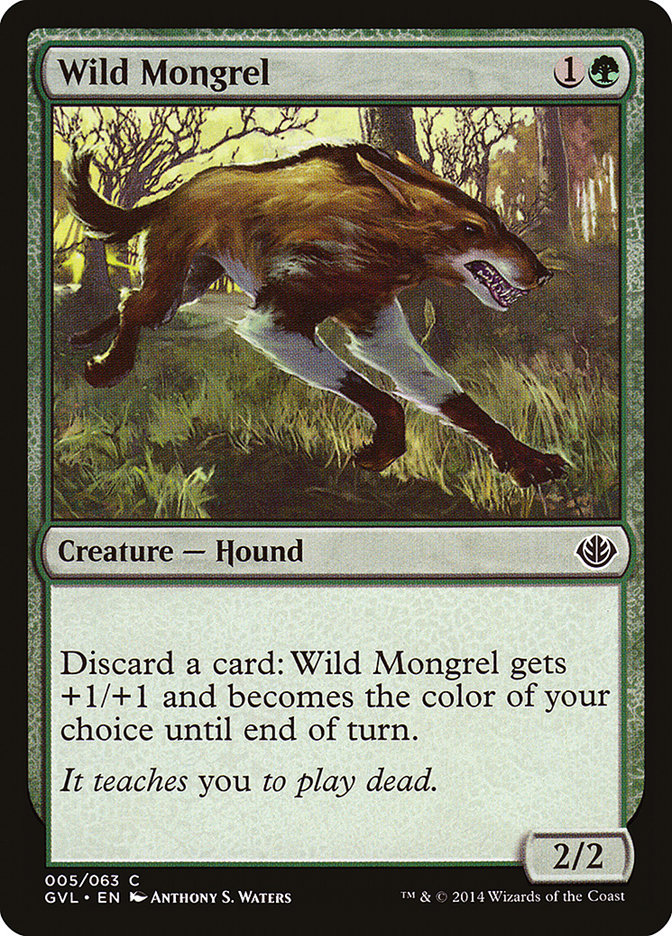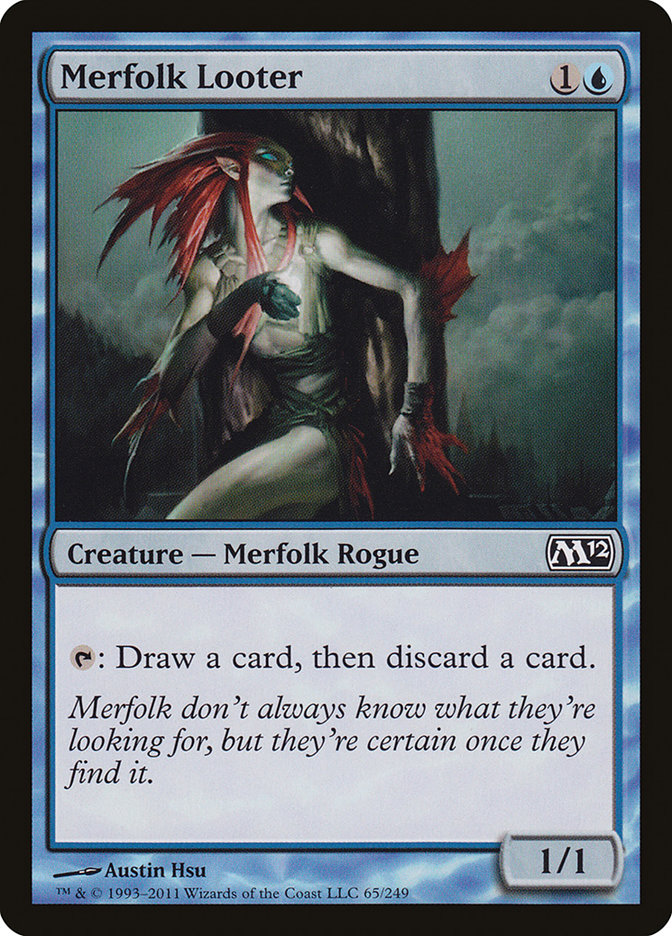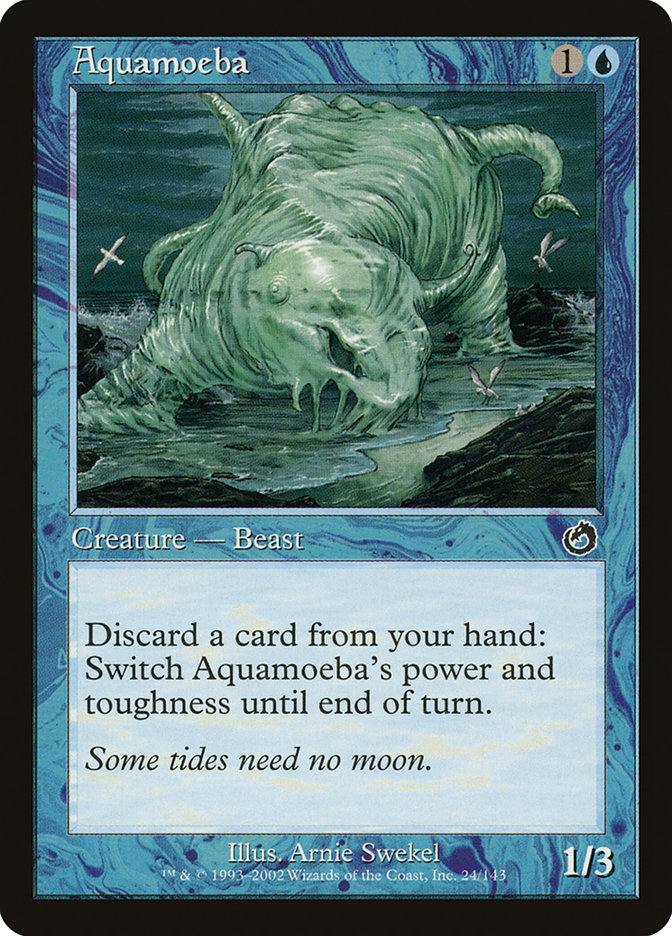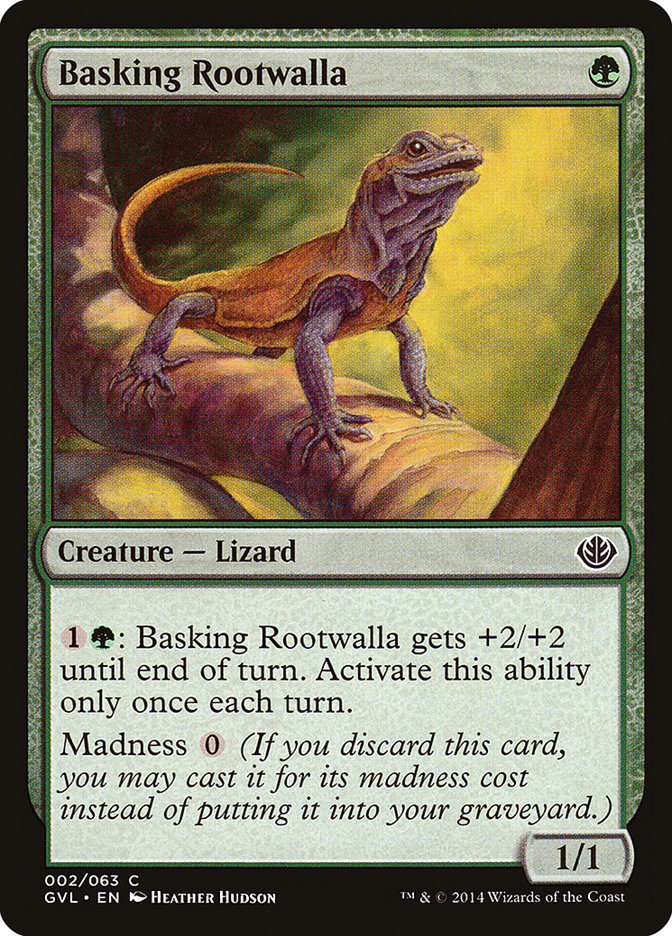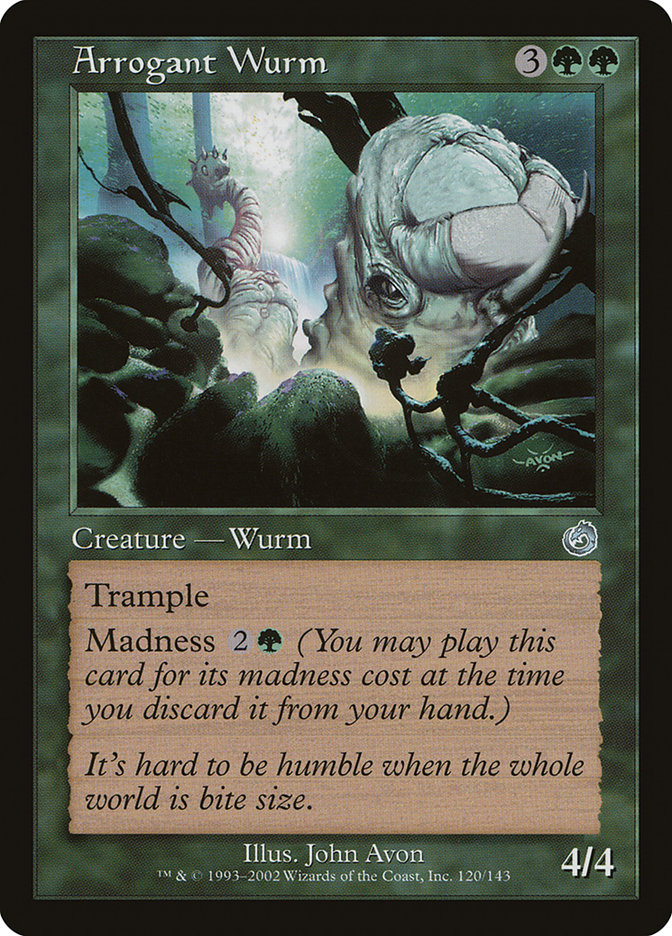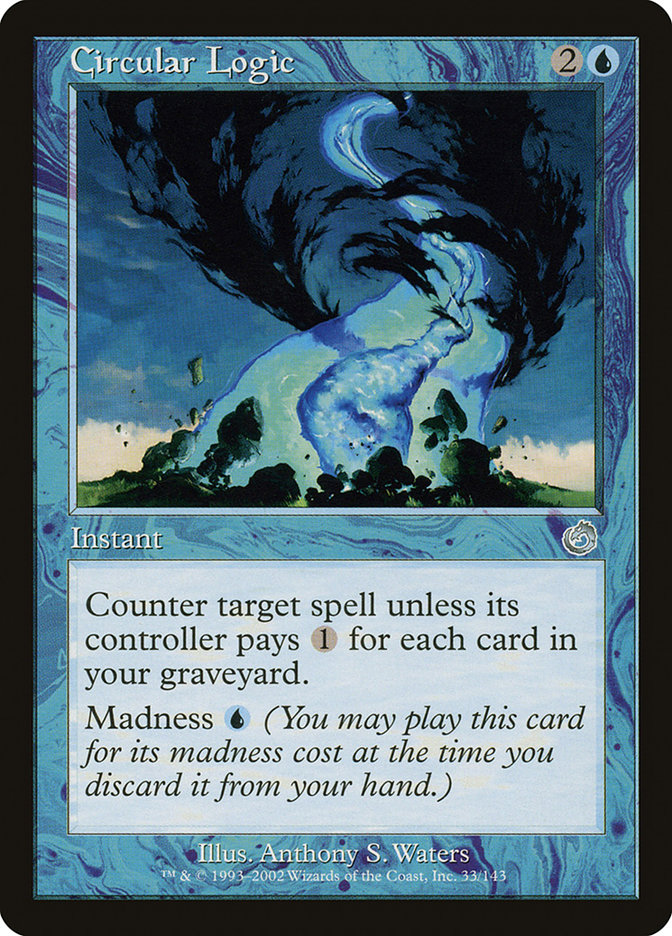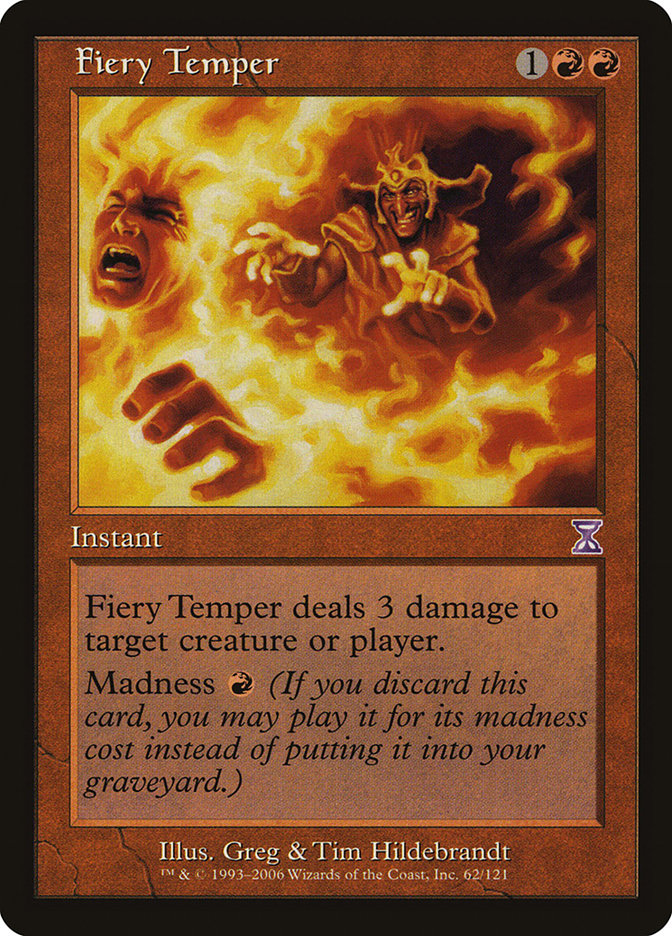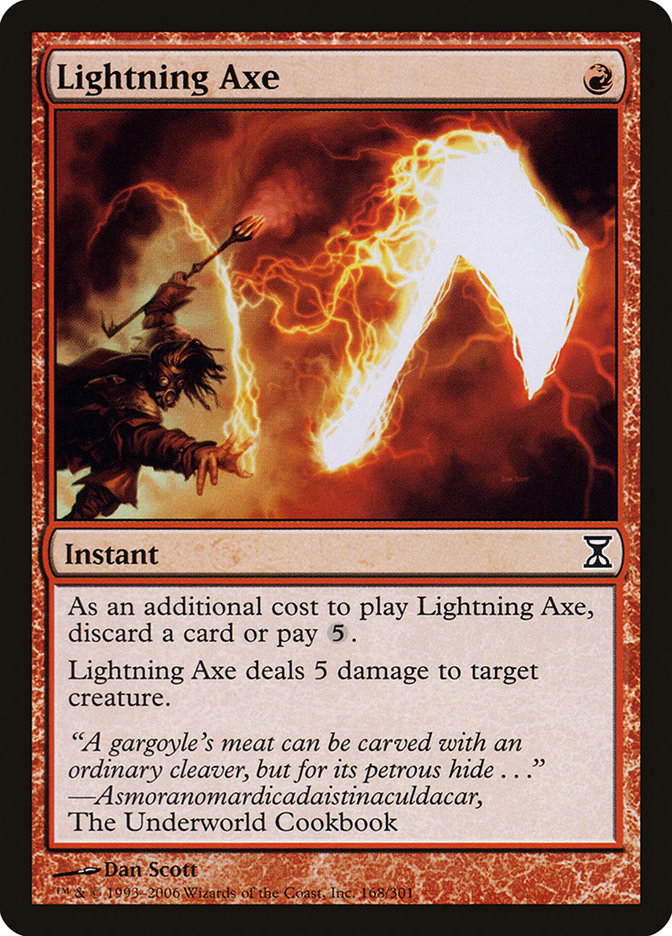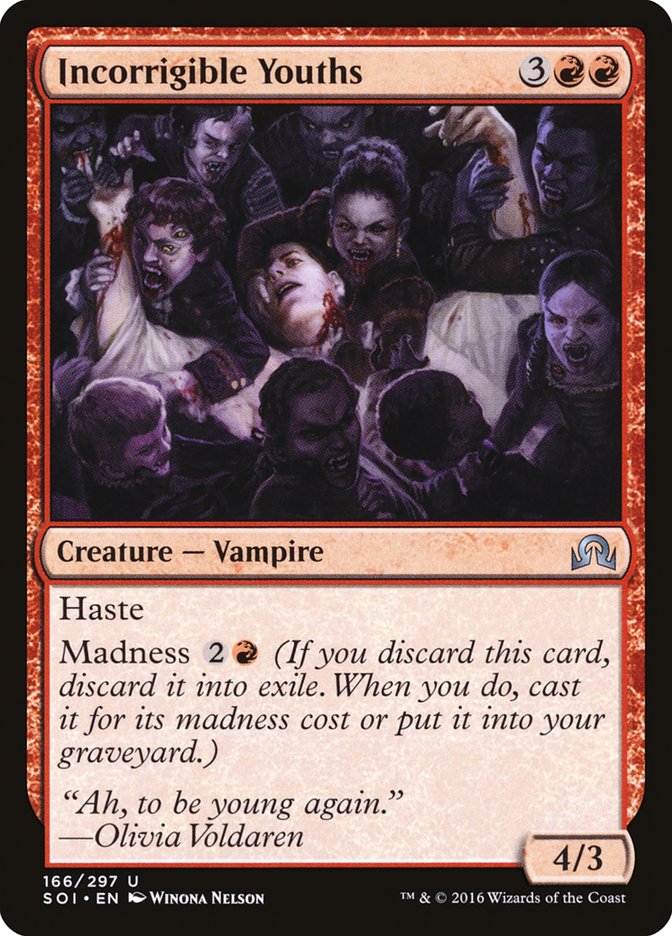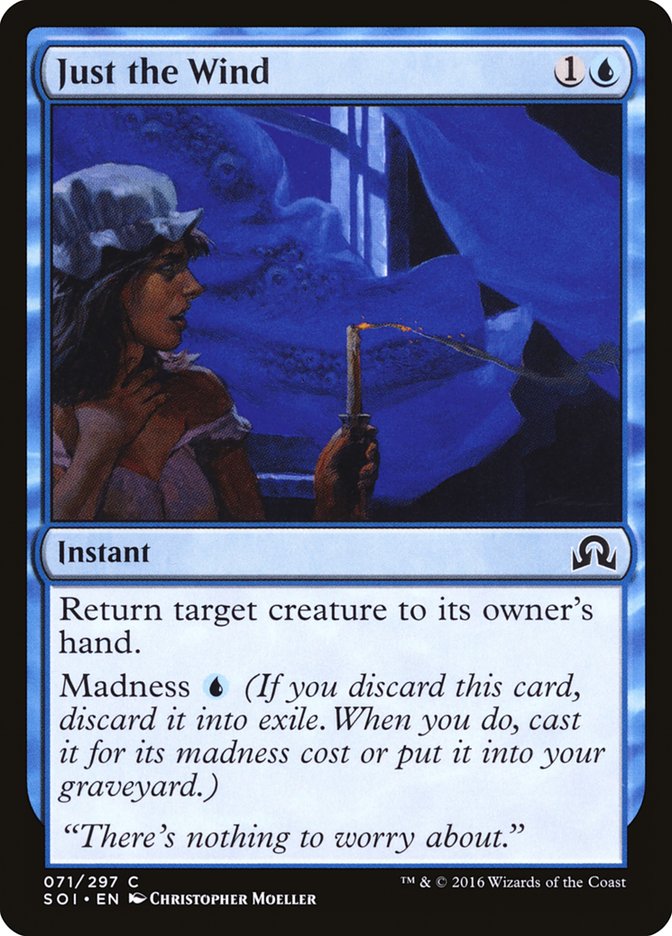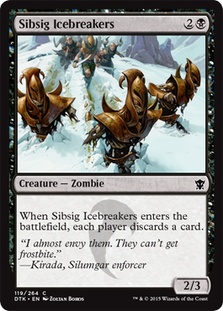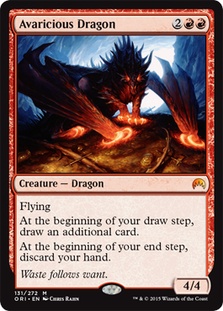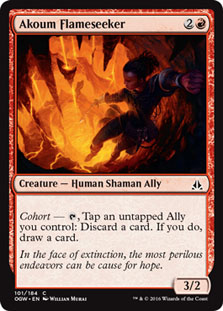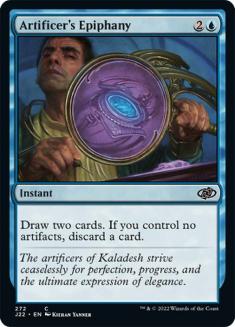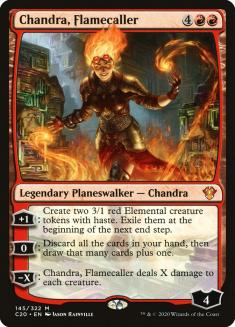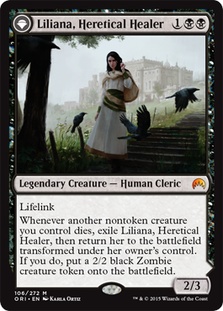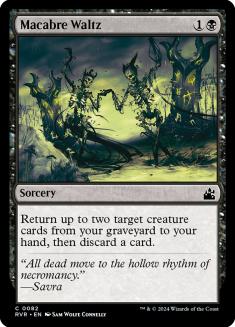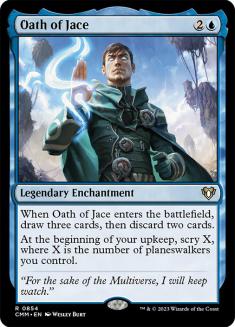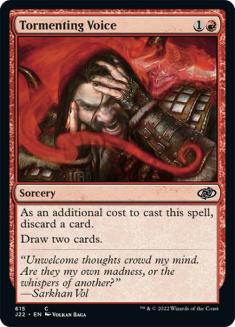Soon Magic will be returning to the beloved plane of Innistrad. Full of monsters, werewolves, vampires, and other great horror tropes alongside some great top-down design, Innistrad was one of the more popular sets in recent memory. Innistrad also had a pretty significant graveyard theme and borrowed a mechanic from Magic’s past that was very graveyard-centric, Flashback.
Our return to Innistrad will once again take us much farther into the past than the set’s namesake.
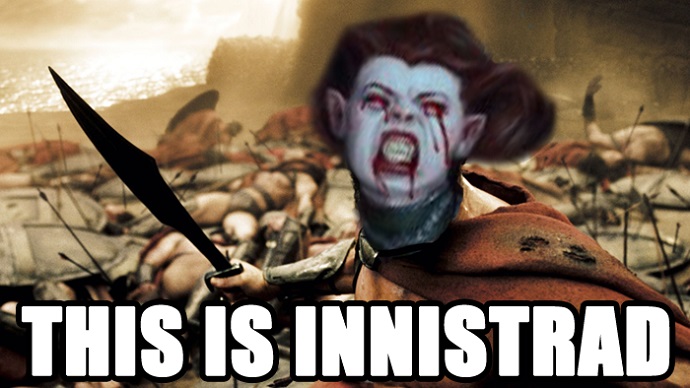
Torment was released a very long time ago, and Magic has grown by such leaps and bounds that I doubt many people reading this now have memory of what Standard looked like at that time. May I present to you the terror of Standard for as long as it was legal (even making forays into Extended and Legacy):
Creatures (20)
Lands (22)
Spells (18)
Sideboard

There were many different versions of U/G Madness, but most of them have been lost to the sands of time. Still, this gives us a very good idea what a good U/G Madness deck used to look like. U/G Madness was a tempo deck through and through and used the cost reduction and instant speed of Madness to deploy its threats quickly and at opportune times.
Madness decks require two key elements: excellent enablers and good madness payoffs. Wild Mongrel may not look like much these days when placed side by side with Tarmogoyf or even Sylvan Advocate, but at the time it was the best two-drop ever printed. Cards like Merfolk Looter and Aquamoeba were also perfectly serviceable as well, and they all share the most important quality a madness enabler can have:
They can be activated at instant speed with zero mana investment.
This means that your madness cost is the full cost of the spell and that you can play it at any time, even if it’s a creature or sorcery. Careful Study also was a good enabler because it was so cheap and because the payoff was quite good as well.
For the madness cards themselves, they need to be somewhat playable at cost and absolutely excellent when played for their madness cost. Basking Rootwalla and Arrogant Wurm were both very solid beaters that could play offense or defense, and Circular Logic was very close to Counterspell for a single blue mana. It’s not hard to see why these cards work so well with their respective enablers, nor why this deck was so powerful for its entire run in Standard. More important than seeing it, however, is understanding it.
Understanding Madness
Madness is a very confusing mechanic. It is an odd replacement effect that replaces an action that is usually very uncommon in a game of Magic unless your opponent is specifically playing black discard. As such, it can be hard to understand how to properly value the benefits you are getting from playing a spell for a madness cost.
The most important thing to understand is that discarding a card is usually a cost of some kind. Jace, Vryn’s Prodigy would clearly be broken if his ability simply read “draw a card,” and having to discard a card is what balances the ability. This is very similar to how cards like Wild Mongrel and Psychatog work: the cost to use the ability is the loss of a card in your hand.
Madness completely changes the equation, turning a cost into a benefit.
Imagine you tap your Jace, Vryn’s Prodigy, draw a card, and then discard a Fiery Temper to his ability. You pay one mana and use it to Lightning Bolt your opponent’s Sylvan Advocate. You have now fundamentally altered Jace’s ability from “draw a card, then discard a card” to this:
“Draw a card. Add RR to your mana pool.”
As if Jace wasn’t good enough already.
When used in conjunction, madness enablers and their madness payoff cards provide a monumental advantage.
The New Class
Very little of Shadows over Innistrad is spoiled yet, but we already have a number of excellent-looking madness spells and enablers to join the few enablers currently available in Standard.
Heir of Falkenrath and Ravenous Bloodseeker both may not look like much more than reasonable Limited cards, but I assure you that at least Heir of Falkenrath will be seeing significant Constructed play. They both adhere to many of the characteristics that made Wild Mongrel and Aquamoeba playable. They are cheap, reasonable beaters on their own and they are discard outlets that require no mana investment. They are also both Vampires, which may or may not end up being relevant.
Lightning Axe is a personal favorite card of mine, and it seems like it is going to be coming back for another go. Five damage for one mana at instant speed puts cards like Roast to shame, and being able to use it as a combination of excellent removal and Dark Ritual effect is going to be excellent.
We only have three possible madness cards spoiled so far, but they are all very reasonable. Incorrigible Youths is by far the standout, as it compares very favorably to Arrogant Wurm and is much more aggressive. A opening draw of turn 2 Heir of Falkenrath, turn 3 discard Incorrigible Youths is a mightily aggressive start and will likely be one of the benchmarks of Standard moving forward.
Fiery Temper is another throwback that looks to bring Lightning Bolt back to Standard. Although it didn’t see that much play the first time around, that was more because of how the enablers in Torment worked rather than lack of power level. For some odd reason, every red discard enabler in Odyssey block discarded randomly, making them completely unplayable. With quality enablers, which it seems like we will be getting, Fiery Temper is quite good.
Just the Wind is the least exciting of the trio, but again one must understand exactly what madness does to see that it is still a very reasonable card. Unsummon is borderline Standard-playable, and this card nets you an Unsummon as well as whatever effect you got from the discard. Discarding this to Lightning Axe, for example, is quite the instant-speed two mana combat trick.
Re-Examining Current Options
When a mechanic like madness comes along, it is very important to look at the cards already in Standard to see if there are any preexisting cards that provide us good discard outlets.
The most obvious of these is Jace, Vryn’s Prodigy, and it’s somewhat surprising that Wizards would want to make the defining card of the format even better. Still, that’s what we’ve got, and I expect that many Fiery Tempers will be discarded to Jace, Vryn’s Prodigy over the next few years. Merfolk Looter was already a tournament-winning card in environments with madness, and Jace, Vryn’s Prodigy is the best Merfolk Looter ever printed. If you don’t already have your Jaces, I would pick them up now.
Surprisingly, there really aren’t that many other good madness enablers currently in Standard. Many of them either require too much of a mana investment upfront to be reasonable or just are too far underpowered.
If you have to pay some mana upfront before even paying the madness cost of your madness spell, you aren’t gaining any mana advantage. This is why the best enablers offer you discards free of any mana costs.
Liliana, Heretical Healer is the best of all of these for that exact reason. Once she’s flipped, you can activate the discard ability on Liliana and have all your mana available to pay madness costs. This not only gives you a good madness outlet but also helps break the symmetry of Liliana’s discard ability.
Down the Well
With a number of good options spoiled already and 200+ cards to go, it looks like madness is going to be both a major theme of the set and a major player in Standard as well.
I for one welcome it. I’d had enough of four-color good stuff decks and busted multicolor cards; I can’t wait to play two colors again!
Challenge Thursdays
Week two of Challenge Thursdays did not go nearly as well as week one.
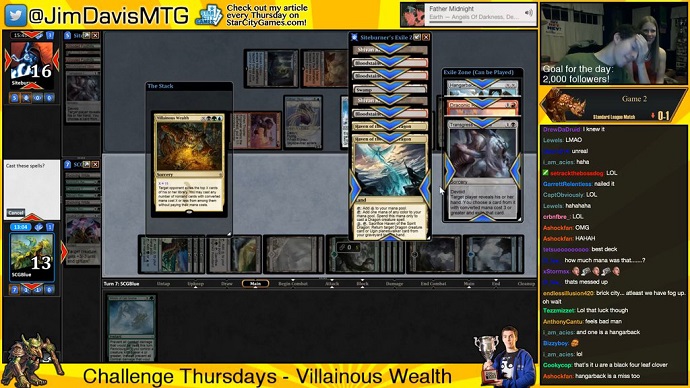
“Standard Villainous Wealth as only win condition (no creatures)” by @JohnKassari won by a scant two votes last week, and I can comfortably say I never want to see the card Villainous Wealth ever again.
Thankfully, there’s always another week! Here are this week’s options as submitted by you, the viewers:
Once again the poll will end at 6:00pm EST, which will give me one hour to construct my deck. Then you can tune in at 7:00pm for the start of the stream. I will be playing an entire League with the challenge deck, tweaking it a bit, and then playing another League right after.
How many wins can I get? Cast your vote and tune in to my stream at 7:00pm to see how it goes!


